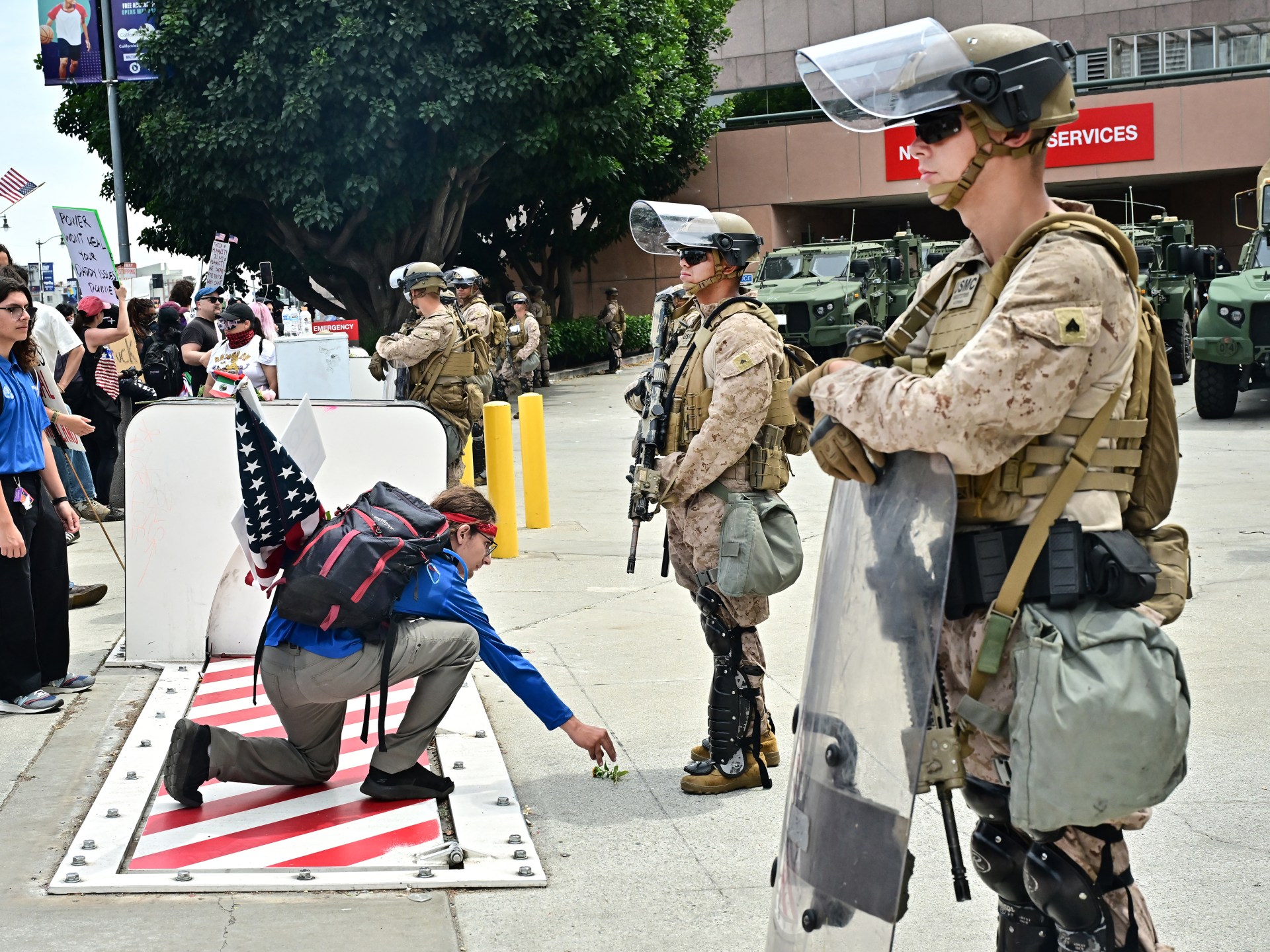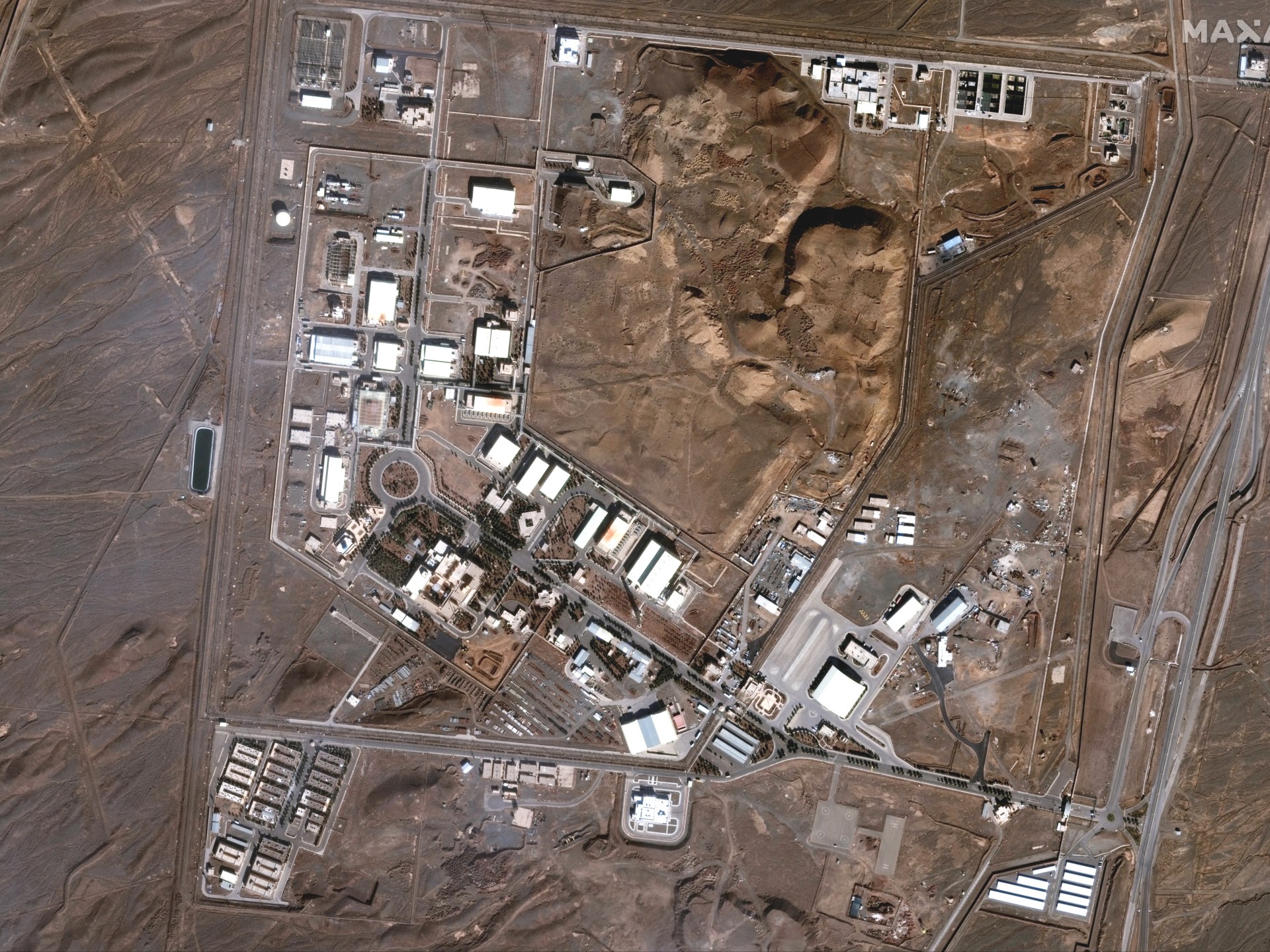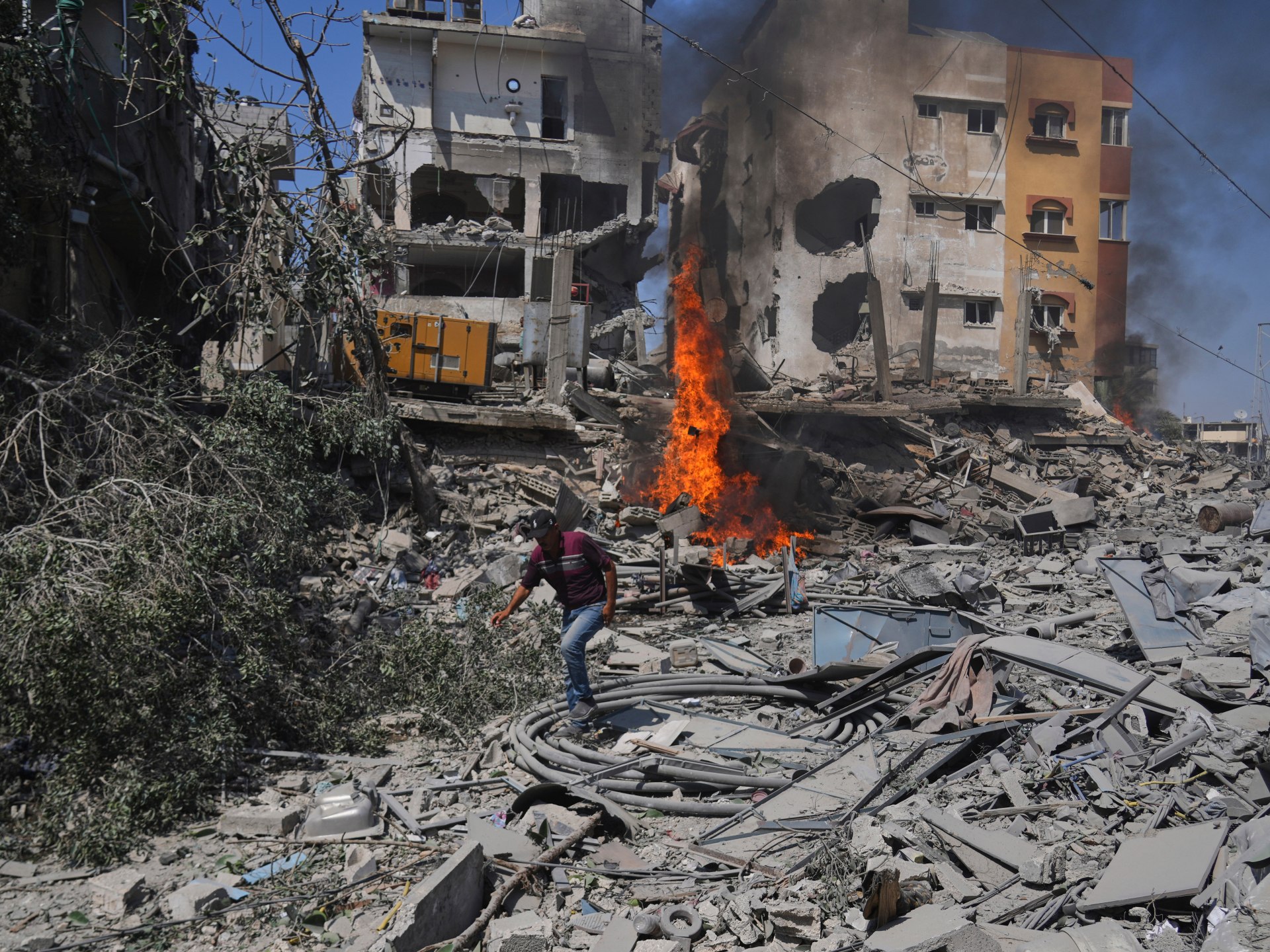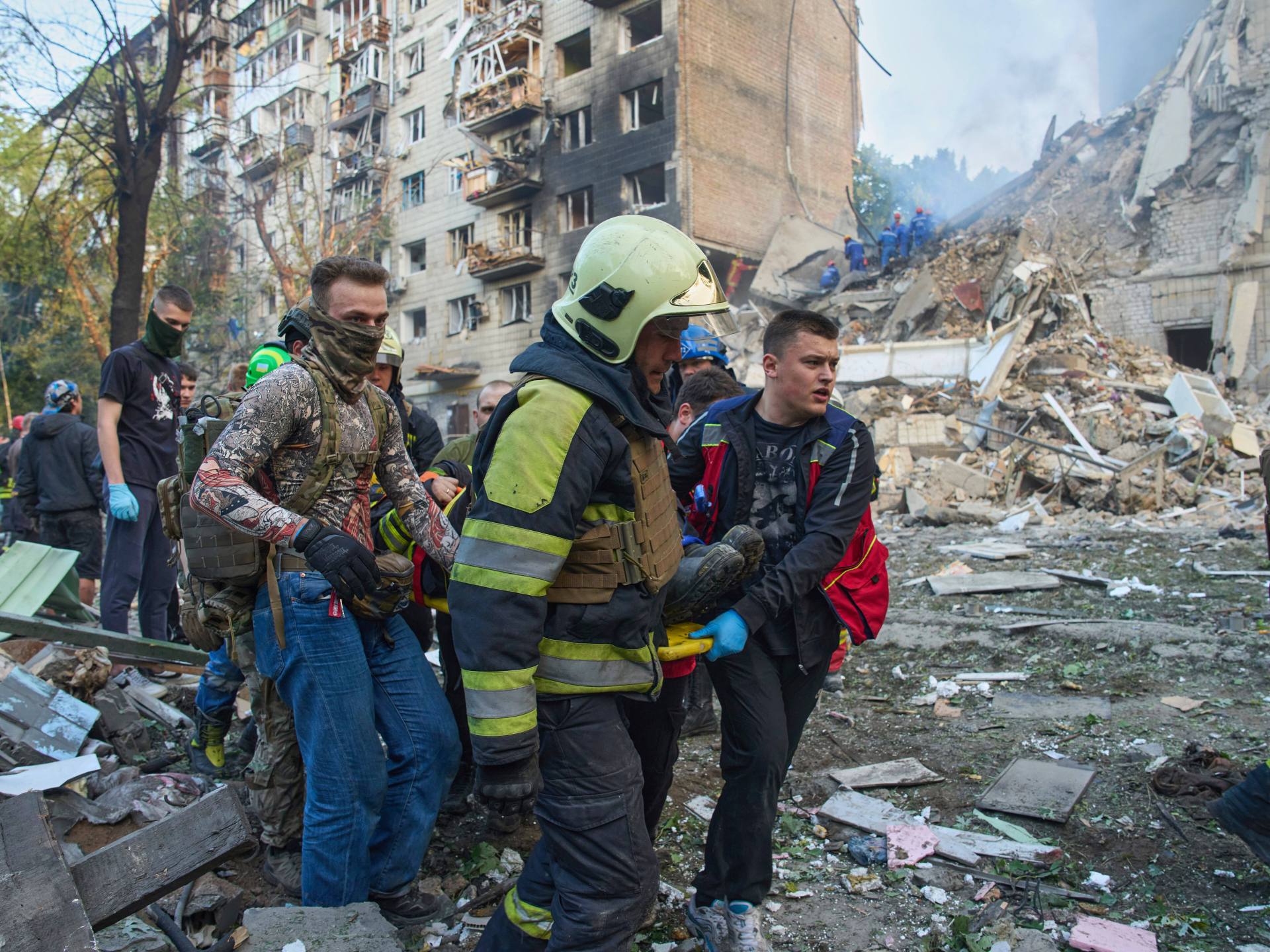Israeli Prime Minister Benjamin Netanyahu’s decision to launch strikes against Iran’s nuclear facilities has sparked concerns among sections of the global community, atomic energy regulators and experts on the risks of nuclear contamination.
On Monday, Rafael Grossi, the head of the United Nations nuclear watchdog, said there was a possibility of both radiological and chemical contamination from the damaged Natanz installation, Iran’s major nuclear hub.
Meanwhile, regional and global leaders warned that the Israeli strikes, which began on Friday, could further destabilise the region and increase the chances of a nuclear confrontation.
Kaja Kallas, the European Union’s foreign policy chief, on Saturday expressed “deepest concern” at the escalation. The EU opposes Iran’s possession of nuclear weapons but believes “diplomacy, not military action” is the way to achieve that, she said.
Netanyahu, who has been calling for attacks on Iran’s nuclear sites for years, launched the unprecedented strikes as nuclear talks were being conducted between Washington and Tehran.
United States President Donald Trump has said his country was not involved in the attacks but has promised that he won’t allow Tehran to acquire nuclear weapons. Iran has insisted its nuclear programme is for civilian purposes.
So do Israel’s attacks point to a growing risk of nuclear radiation after two nuclear-armed neighbours – India and Pakistan – also came to blows in May and with Russia and Ukraine tussling for control over the Zaporizhzhia Nuclear Power Plant, Europe’s largest?
What did the IAEA say?
Addressing an urgent session of the Board of Governors of the International Atomic Energy Agency (IAEA) in Vienna on Monday, Grossi said radiation levels appear normal outside both the Natanz nuclear installation and another facility in Isfahan also targeted in Israeli strikes.
However, the IAEA director general warned that military escalation “increases the chance of a radiological release”. Grossi had on Friday told the UN Security Council that Israel’s strike on Natanz destroyed the above-ground part of the facility. While the main centrifuge facility underground was not hit, it lost power because of the attack.
That in turn, he warned, might have damaged the underground centrifuges that enrich uranium. Spinning centrifuges contain a gas called uranium hexafluoride, and it is this gas that poses the greatest risk of chemical contamination at Natanz at the moment, Grossi said. The gas is made by combining uranium and fluorine and is highly volatile and corrosive. It can burn skin and can be deadly if inhaled. It is unclear whether any of this gas has escaped from the centrifuges because of the power loss.
“Amid these challenging and complex circumstances, it is crucial that the IAEA receives timely and regular technical information about the facilities and their respective sites,” Grossi said. In the absence of that information, he said, the IAEA “cannot accurately assess the radiological conditions and potential impacts on the population and the environment and cannot provide the necessary assistance.”
Have nuclear facilities been hit before?
Al Jazeera cannot find a record of an operational nuclear installation coming under attack, but power plants have often been attacked while under construction – mostly in the Middle East.
A week into the Iran-Iraq War in 1980, Iran’s Operation Scorch Sword damaged Iraq’s unfinished Osirak nuclear reactor in the world’s first attack on a nuclear power plant.
Israel conducted another air attack the following year, destroying the French-built reactor in Operation Opera. A decade later, US Operation Desert Storm attacked the Tuwaitha Nuclear Research Centre, of which Osirak was a part.
Iraq also attacked Iran’s incomplete nuclear reactor at Bushehr during the Iran-Iraq War, damaging it. The Soviet Union eventually completed the reactor in the early 2000s, and it went into operation in 2009.
Israel recently revealed that in 2007, it had bombed a Syrian reactor, apparently only just before it became operational, believing it to be part of a plan by President Bashar al-Assad’s regime to acquire nuclear weapons. Operation Outside the Box bombed the North Korean-built plutonium reactor at Deir Az Zor, destroying it.
Other reactors have come under attack for political rather than security reasons.
Spain’s Basque separatist group ETA bombed a nuclear power station under construction in Lemoiz on Spain’s northern coast. ETA detonated bombs inside the facility in 1978 and 1979, killing three workers. Twice it assassinated the project’s chief engineer. Spain eventually abandoned the plant in 1983 after the Francisco Franco dictatorship’s nuclear programme was cancelled.
Antinuclear activists caused damage to unfinished power plants in 1982. In France, they fired five rocket-propelled grenades into the Creys-Malville plant near Lyon, creating a hole in its outer concrete wall.
In December of that year, the African National Congress set off a series of four staggered bombs at the Koeberg Nuclear Power Station, which South Africa’s apartheid government was building near Cape Town. The first of two reactors at the plant was to have started operating that month. There were no injuries or radiation leakage.
Have there been other times the world’s been close to a nuclear incident?
In an interview with Al Jazeera, Dan Smith, the head of the Stockholm International Peace Research Institute, said the world has rarely been in much danger from accidental nuclear weapons use.
Previously, risks have primarily arisen from the threat of miscalculations.
“The last time that there was open information to show we were so close to disaster is the Petrov incident in September 1983 – a false alarm in the Soviet early warning system that he [an engineer] refused to report,” Smith said.
Stanislav Petrov, who worked at Moscow’s early warning command centre, received satellite information that a US ballistic missile had been launched against Russia, followed by four more.
It was a time of great tension between the superpowers as the US objected to the deployment of Russian SS20 missiles with multiple warheads and Moscow objected to forward-deployed Pershing II nuclear missiles being stationed in Western Europe.
Petrov may have averted a nuclear war by waiting for corroborating evidence before alerting his superiors. No missiles hit Russian soil, and the Soviet satellite information turned out to have been faulty.
More recently, during the four-day military conflict between India and Pakistan, India fired its homegrown BrahMos missiles at its neighbour. While the missiles carried conventional payloads in this case, some experts believe they could be modified to carry nuclear warheads too.
And as Khurram Dastgir Khan, former Pakistan defence minister, told Al Jazeera in May: “Once the missile is in the air, you cannot know what payload it carries until it hits the target.”
Such scenarios increase the risk of a nuclear war in instances in which both sides – such as in the case of Russia and NATO in Europe – are nuclear armed, Smith said.
He said that more than any planned nuclear attack, he worries about “somebody somewhere, in a chain of command under extreme pressure of time, with hostility in the atmosphere, with violent rhetoric in the background,” reacting mistakenly.
“Somebody sees something and they say, ‘That’s it. This is the big one. This is the attack coming. It’s 75 missiles and their warheads, just like we predicted in our exercise six months ago, and we have to destroy the remainder of their force so that they cannot escalate.’”
Has the Russia-Ukraine war added to the risks too?
A more recent nuclear contamination scare came early in Russia’s invasion of Ukraine when it seized the Zaporizhzhia Nuclear Power Plant (ZNPP) on March 4, 2022. The ZNPP has six reactors, and it stands on the left bank of the Dnipro River, which forms part of the front line between Ukrainian and Russian forces.
Ukraine said Russia had placed 500 soldiers with military equipment, tanks and ammunition in the engine room of the first reactor unit, impeding access for firefighting equipment.
This Russian garrison also fired into Nikopol, across the Dnipro, apparently to provoke retaliatory fire.
On August 1, 2022, then-US Secretary of State Antony Blinken told the UN General Assembly: “Russia is now using the plant as a military base to fire at Ukrainians, knowing that they can’t and won’t shoot back because they might accidentally strike a nuclear – a reactor or highly radioactive waste in storage. That brings the notion of having a human shield to an entirely different and horrific level.”
Two days later, Ukraine’s state nuclear power agency, Energoatom, said Russian forces fired rockets and artillery into the power plant, damaging its nitrogen-oxygen station. “There are risks of hydrogen leakage and sputtering of radioactive substances. Fire danger is high,” Energoatom said.








